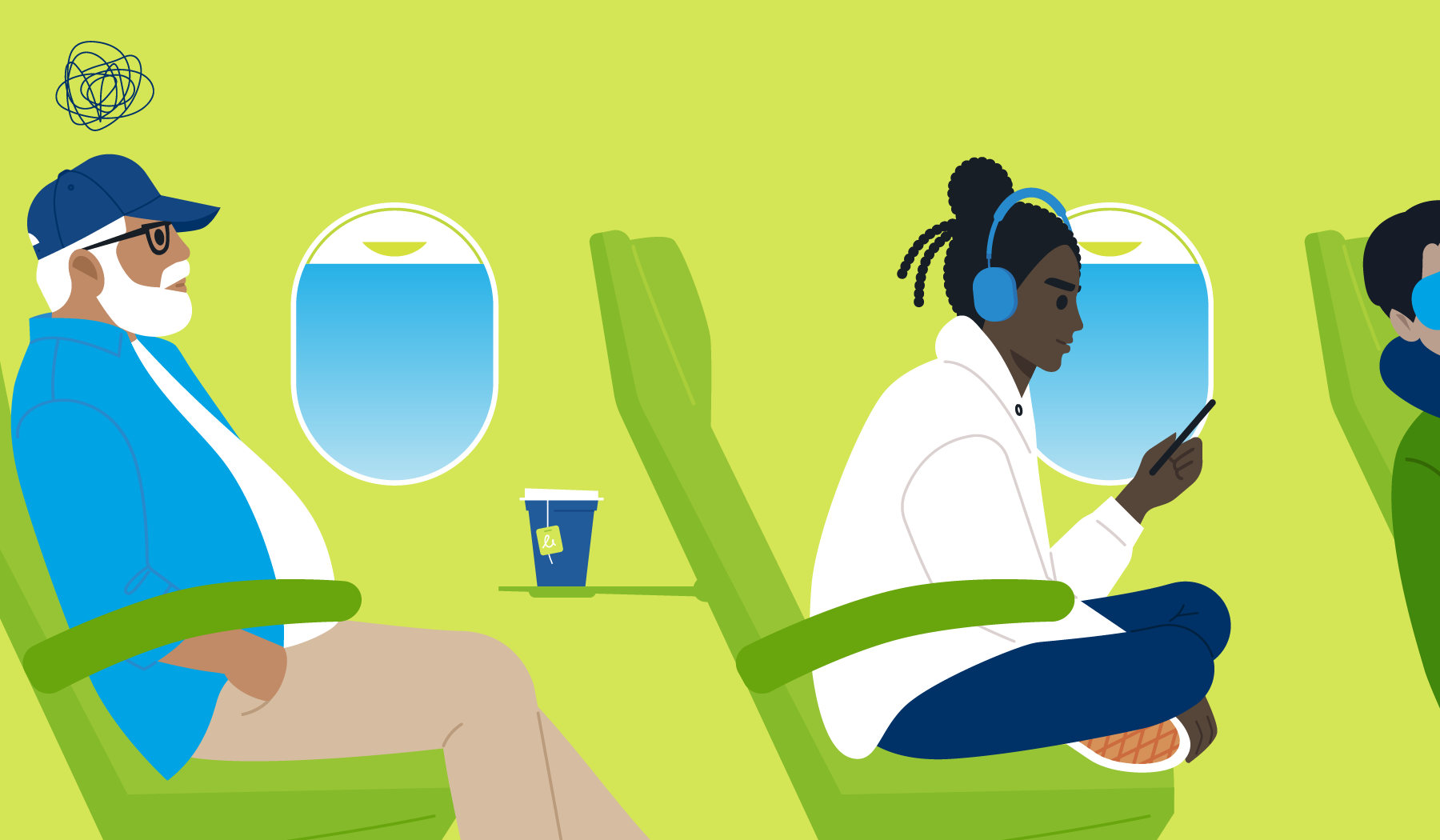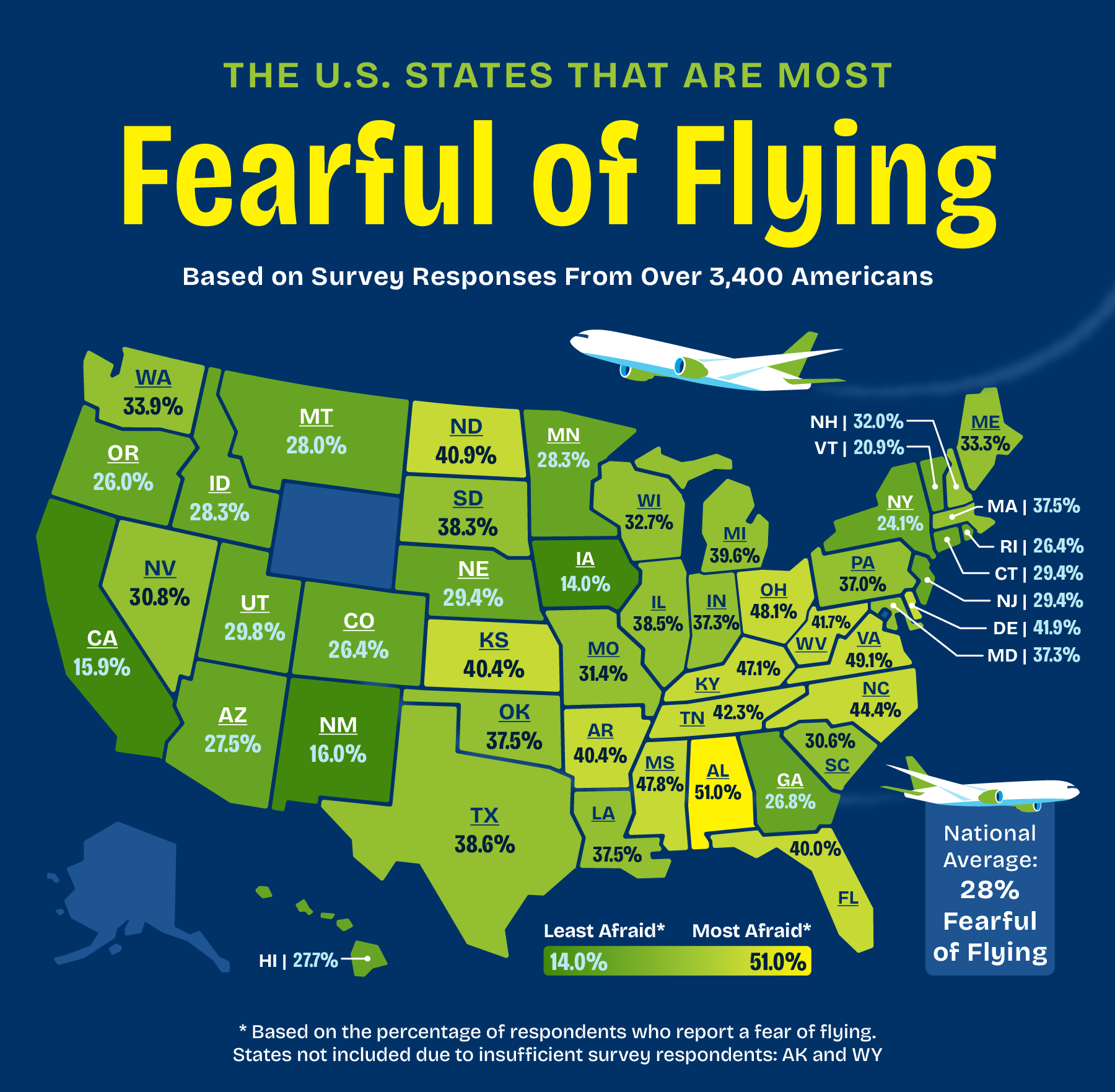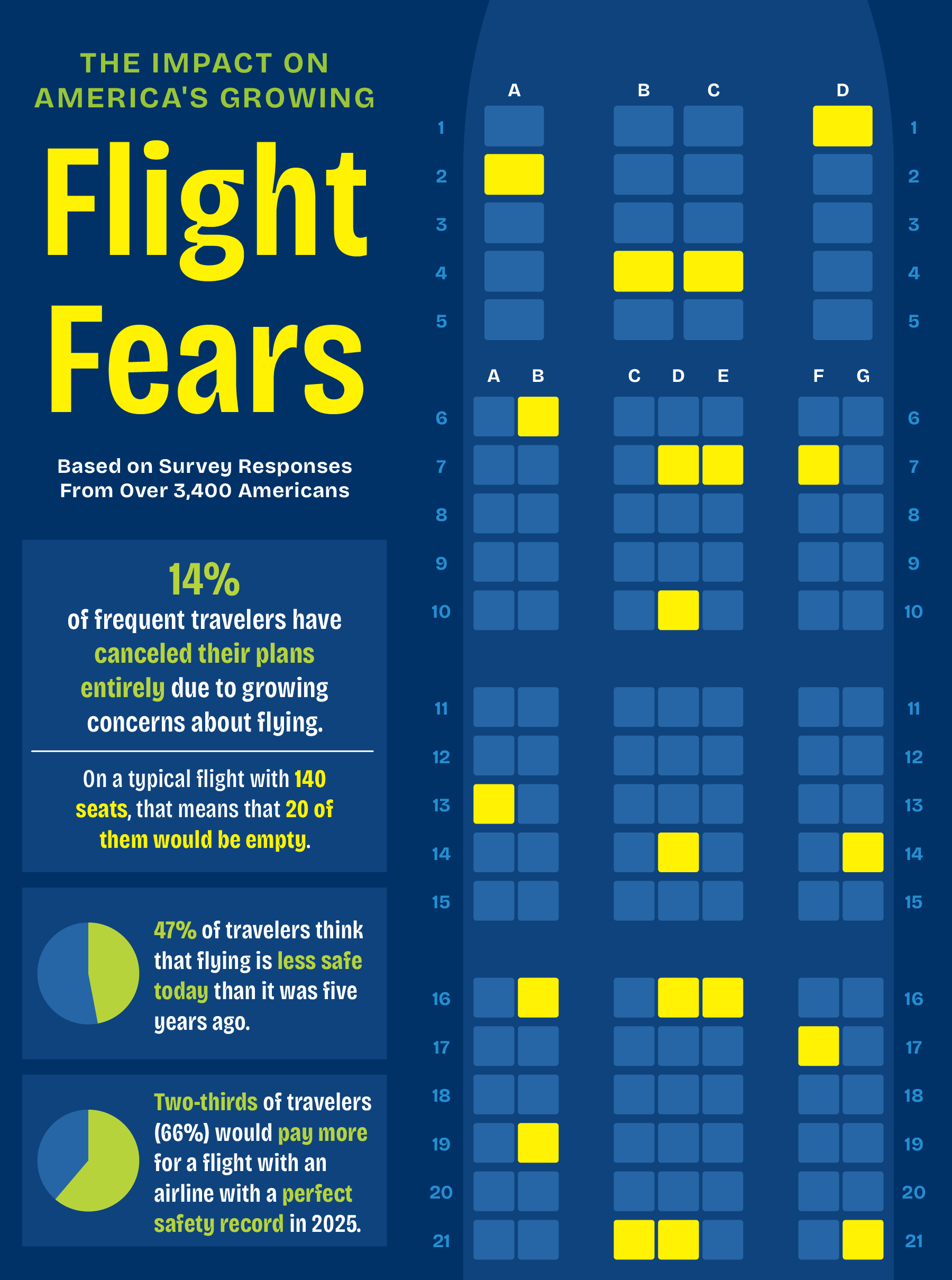
For many people, flying is the fastest route to family, fun, or a well-earned break. But for others, it’s a major source of stress. And one that seems to be growing.
To understand how Americans feel about flying today, we surveyed more than 3,400 people across the country, including residents from every state and a group of frequent travelers. We asked about their flight fears, how those fears have changed, and how they’re shaping travel decisions. The results reveal a country that’s eager to explore, even as concerns about air travel continue to rise.
Where Flight Anxiety is Most Common

Fear of flying isn’t rare, but in some parts of the country, it’s far more common than others.
To understand where flight anxiety is most prevalent, we surveyed people across 48 states and asked whether they feel any fear when boarding a plane. Below are the five states with the highest share of residents who said yes:
- Alabama – 51% of residents report some fear of flying
- Virginia – 49.1%
- Ohio – 48.1%
- Mississippi – 47.8%
- Kentucky – 47.1%
Southern and Midwestern states dominate the top of the list. Many of these areas are served by smaller regional airports, which can mean older planes, more turbulence-prone routes, or fewer direct flights. All factors that may heighten anxiety. Residents in these states might also drive more often for long-distance travel, making air travel feel less routine and more stressful when it does happen.
On the opposite end of the spectrum, some states report far fewer residents with flight fears:
- Iowa – 14% of residents report some fear of flying
- California – 15.9%
- New Mexico – 16%
- Vermont – 20.9%
- New York – 24.1%
The states with the lowest flight anxiety include a mix of travel-heavy regions and smaller, more rural states. Californians and New Yorkers, for example, are more likely to live near major international airports and would be more accustomed to flying for work or leisure. But Iowa and Vermont may rank lower due to the opposite reason; residents there may fly less often or not at all. In these cases, lower exposure to air travel could mean fewer opportunities for stress to build, and those who do fly might only do so for important, planned trips that feel less chaotic or unpredictable.
While flight anxiety is common, where you live appears to play a role in how intense that fear might be. In the next section, we’ll look beyond geography and explore how travel habits for more frequent fliers shape anxiety in the skies.
What’s Fueling America’s Flight Anxiety?

Fear of flying isn’t just concentrated in certain parts of the country, it’s growing across the board. Among people who travel regularly, anxiety in the skies seems to be both more common and more intense today than it was in the past.
We surveyed 1,000 travelers to better understand how they’re feeling about flying right now. Here’s what stood out:
Nearly 3 in 10 travelers say they have a fear of flying.
- That’s not a fringe concern. Roughly a third of frequent travelers are boarding planes with some level of unease.
That fear is rising fast.
- The average traveler rated their fear of flying at a 4.6 out of 10 today. That’s up from 3.2 out of 10 last year. A 41% increase. This wasn’t just driven by travelers who are generally more anxious, either. Even those with low fear scores last year reported notable jumps.
- Travelers who rated their fear at 1 last year now rate it at 2.5.
- Those who rated it at 3 now say 4.5.
- Those who rated it at 6 now say 7.1.
- Regardless of where people started, their fears have grown.
External factors are driving much of this change.
- 75% of travelers say recent media coverage of plane crashes has made them more fearful.
- 66% say layoffs at the FAA have had the same effect.
- 28% say they’re not confident the FAA can keep air travel safe today.
Transparency may help.
When asked what would make them feel safer:
- 62% said they want more information about plane maintenance and safety procedures
- 48% said increased government oversight would help ease their concerns
These responses suggest a growing trust gap between travelers and the systems that govern air travel. In the next section, we’ll explore how that fear is shaping actual travel behavior. Specifically, whether people are changing their plans to avoid flying altogether.
The Impact of Flight Fears on Travel

Flight fears don’t just stay in people’s heads. They’re starting to shape how and when people travel. Our survey found that many people are changing their behavior in response to growing concerns about safety:
14% of travelers have canceled a trip due to fear of flying.
- That might sound small, but on a flight with 140 seats, that’s the equivalent of 20 empty seats when the plane takes off.
47% believe flying is less safe today than it was five years ago.
- That loss of confidence could have a long-term impact on travel habits, especially for people who fly often.
66% of travelers would pay more to book with an airline that had a perfect safety record in 2025.
- On average, people said they’d pay 19% more for that peace of mind.
These findings suggest that flight anxiety isn’t just a growing feeling. It’s a growing factor in how travelers make decisions.
Closing Thoughts
Fears of flying are widespread, and for many, they’re growing. Concerns about crashes, staffing at federal agencies, and overall trust in air safety are pushing more travelers to rethink their plans. Some are canceling trips, others are finding other means of transportation. But even as anxiety climbs, nearly half of travelers still believe flying is the safest way to go long distances, ahead of trains and cars.
It’s a reminder that travel, however it happens, still matters. Whether you’re taking to the skies or staying grounded, the goal is the same: seeing new places, spending time with loved ones, and making the most of every trip.
For some, that starts with making financial moves that open new doors. At Coventry Direct, we help people unlock the value of unneeded life insurance policies, turning them into cash that can be used to fund meaningful experiences—travel included. Find out if you qualify today.
Methodology
To determine the states where people fear flying the most, we surveyed over 2,400 people from 48 states over two weeks in April 2025. We asked them if they had a general fear of flying and to what extent they’d say that fear manifests itself.
To get a deeper look at travel anxiety for those it impacts the most, we also surveyed 1,000 frequent travelers to get more insights into how they view the flying experience today, what’s caused an increase in travel anxiety (if anything), and what impact that’s had on their travel plans.

